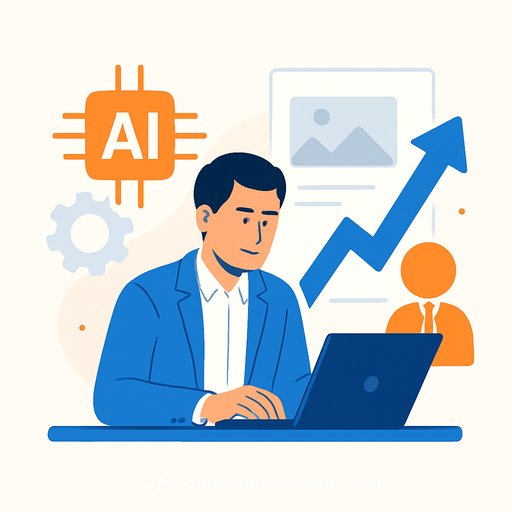Top 10 AI Skills Hiring Managers Want Right Now - And How to Build Them
AI hiring in China is heating up, and the focus is shifting from research labs to product teams. In Q3, AI job postings grew 11 percent year-on-year on Zhaopin, while job seekers surged 23 percent. Across the first nine months, openings were up 3 percent, but applicants jumped 39 percent - competition is real.
For IT and product leaders, the signal is clear: the market wants people who can ship AI into production, align it with business, and keep it running. If you can pair technical depth with product instincts, you'll stand out.
Where the demand is strongest
- Roles with growing openings: front-end engineer, test engineer, AI product manager, and AI application engineer.
- Core focus areas: algorithms, big data, and product development - a balanced push from R&D to commercialization.
- Industries hiring: communications, finance, education, and healthcare.
- Hot regions: Beijing, Shanghai, and Shenzhen. Beijing leads for algorithm engineers and AI PMs, powered by universities and AI clusters.
The Top 10 AI-related skills hiring managers value
- Applied ML/Algorithms: Model selection, fine-tuning, evaluation, and bias/variance trade-offs tied to business outcomes.
- Data Engineering: Pipelines, feature stores, batch/stream processing, and data quality at scale.
- MLOps: Model versioning, CI/CD for ML, monitoring drift, rollback strategies, and cost control.
- Prompt and Interaction Design: Effective prompting, retrieval patterns, guardrails, and UX for AI features.
- AI Product Management: Problem framing, metrics (offline/online), A/B testing, and compliance-by-design.
- Evaluation and Testing: Golden sets, red-teaming, hallucination checks, and task-specific benchmarks.
- Big Data Analytics: SQL at scale, vector databases, embeddings, and analytics to guide iteration.
- Frontend for AI Experiences: Latency-aware UX, streaming updates, state management, and clarity on AI limitations.
- Backend/Platform Integration: Orchestration, prompt/template stores, caching, fallbacks, and observability.
- Domain Expertise + AI: Finance, healthcare, education, or comms knowledge paired with the skills above.
What this means for your team
Employers want all-rounders who can connect tech, product, and industry context. That includes product leaders who can quantify value, and engineers who think beyond the model to the full lifecycle.
AI is being used as a working partner, not a threat. People who can combine their core craft with AI tools and system design will get picked first.
Practical upskilling paths (90 days)
- Engineers: Ship a small RAG or vision use case end-to-end. Add tests, evals, and monitoring. Document latency, cost, and CE/retention impact.
- Product Managers: Write a one-pager and PRD for an AI feature. Define offline metrics, online guardrails, and an A/B plan with success thresholds.
- QA/Test: Build a golden dataset and red-team suite. Automate eval runs in CI with clear pass/fail gates.
- Frontend: Implement streaming responses, skeleton states, and transparent error/uncertainty messaging.
- Data: Create a reproducible pipeline with a feature store and data contracts. Track schema drift and missingness.
Hiring checklist for AI productization
- Can the candidate explain trade-offs between accuracy, latency, and cost with real numbers?
- Do they show evaluations beyond offline metrics - including user outcomes and failure modes?
- Have they shipped AI to production with rollback and monitoring in place?
- Do they understand privacy, data residency, and model governance for your industry?
- Can they work with cross-functional teams to turn experiments into stable features?
Regional and sector notes
- First-tier cities: Best for algorithm and AI PM roles, with strong academic and startup ecosystems.
- Healthcare: Image recognition and algorithm-aided diagnosis are moving from pilots to workflows.
- Agriculture: Smart monitoring for yield and pest alerts is creating demand for applied engineers.
Market context
The talent pool is growing faster than openings, which means portfolios matter. Show shipped work and measured outcomes, not just models and notebooks.
Independent estimates suggest AI could add significant value to China's economy by 2030. That growth sits with teams who can turn models into reliable products and services.
Next steps and learning resources
- Browse structured learning by role and skill: Courses by Skill and Courses by Job.
- Track practical AI product playbooks and research summaries from industry analysts like McKinsey: AI insights.
Bottom line
Skills that connect models to business outcomes are what companies hire for. Build the stack: data, models, evaluation, product, and ops. Ship, measure, and iterate - that's what wins offers this cycle.
Your membership also unlocks:










